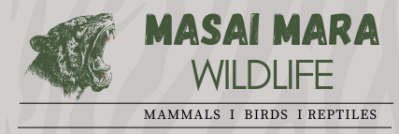- Common Name: Banded Mongoose
- Scientific Name: Mungos mungo
- Swahili Name: Nkuchiro miraba
- Maasai Name: Ekisherin sampin
- Size:
- Head-Body Length (HBT): 70 cm (28 inches)
- Gestation: 9 weeks
- Recognition: The Banded Mongoose is a sturdy, grey-brown mongoose with a grizzled fur coat and 10–12 distinct dark bands running across its back. It has a long tail, and its hunched posture while running is a distinctive feature.
Habits and Behavior
- Diurnal and Terrestrial: Banded Mongooses are active during the day, spending most of their time on the ground. They are incredibly social and live in extended family groups, or clans, that usually number between 15 to 40 individuals. The social structure is matriarchal, led by a dominant female.
- Clan Dynamics: The entire clan is responsible for maintaining harmony and survival. While some members forage for food, others stand on lookout duty, warning the group of danger with alarm calls tailored to specific threats. Martial Eagles, which can target mongooses, are a significant aerial threat, but groups of mongooses have been known to mob eagles, sometimes forcing them to release captured clan members.
- Communication: The Banded Mongoose is highly vocal, using a series of twittering calls and grunts to maintain contact as they forage. Social grooming is a frequent activity within the clan, reinforcing bonds and creating harmony.
- Defensive Behavior: These mongooses are territorial and do not tolerate outsiders. Clashes with rival clans at territorial boundaries are common, and they can be violent, sometimes resulting in fatalities.
Feeding Habits
- Diet: The Banded Mongoose primarily feeds on invertebrates, but it also enjoys birds’ eggs and small reptiles. Known for their resourcefulness, they crack open eggs and hard-shelled insects by throwing them against rocks to access the food inside. They are adept at finding prey by digging into the ground and flipping over rocks or logs.
Habitat
- Where to Find: Banded Mongooses are commonly found in grassland and open savanna, including areas with abundant termite mounds, which they use for both foraging and shelter. In the Masai Mara, they can frequently be seen in family groups moving together through open areas in search of food.
- Denning: An entire clan dens together in termite mounds or disused burrows with multiple entrances, which help with ventilation and quick escape in case of danger. These dens provide protection from predators and are often reused by the group as they move through their territory.
Reproduction and Social Structure
- Breeding: Within the clan, the dominant female has exclusive breeding rights. All members of the clan help in raising the pups, creating a strong sense of communal care. Female Banded Mongooses experience high competition during oestrus, when multiple males may fight for mating rights.
- Parental Care: Pups are raised collectively, with subordinate females sometimes assisting with nursing. This cooperative care ensures the survival of the young and strengthens social bonds within the group.
Conservation Status
- IUCN Status: Least Concern. The Banded Mongoose has a widespread and stable population across much of sub-Saharan Africa, including the Masai Mara. While they are not currently facing major threats, habitat destruction and human encroachment could become issues in the future, particularly as agriculture expands into wild areas.
Unique Traits
- Egg-Cracking Specialists: Banded Mongooses use rocks as tools to crack open eggs and hard-shelled insects, showcasing their ingenuity and problem-solving skills.
- Clan Cooperation: These mongooses exhibit a high level of cooperation, from foraging strategies to shared pup-rearing, making them one of the most socially complex carnivores in the region.
- Territorial Defenders: Their territorial nature is evident during encounters with rival groups, where pitched battles can occur, showing their aggressive side in defending their clan’s space.
In conclusion, the Banded Mongoose is one of the most abundant and visible mongoose species in the Masai Mara, living in close-knit family groups and displaying remarkable cooperation and communication. Their intelligence, resourcefulness, and strong social bonds make them a fascinating species to observe in the wild. While their conservation status remains stable, continued protection of their habitats is essential to ensure they thrive in the future.
